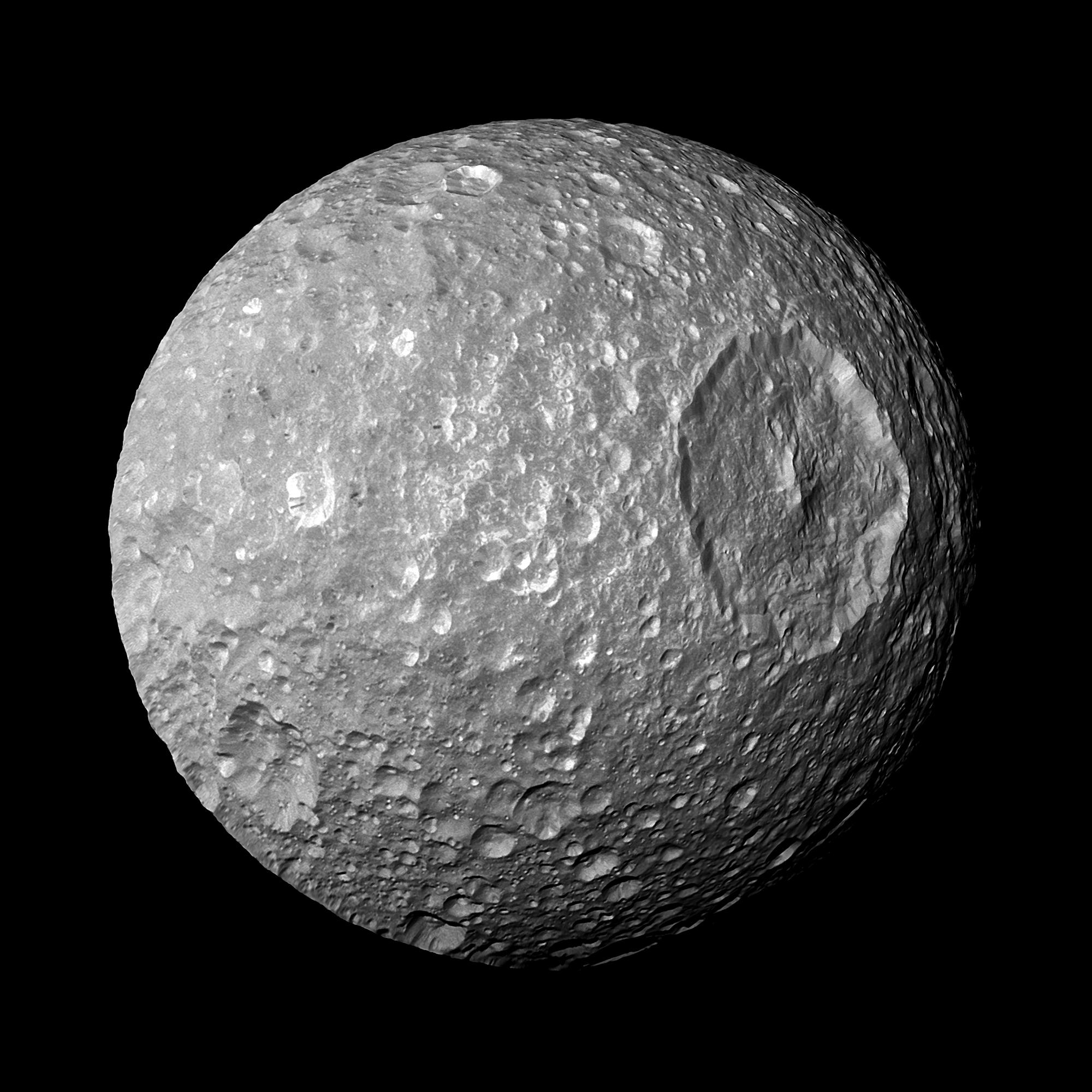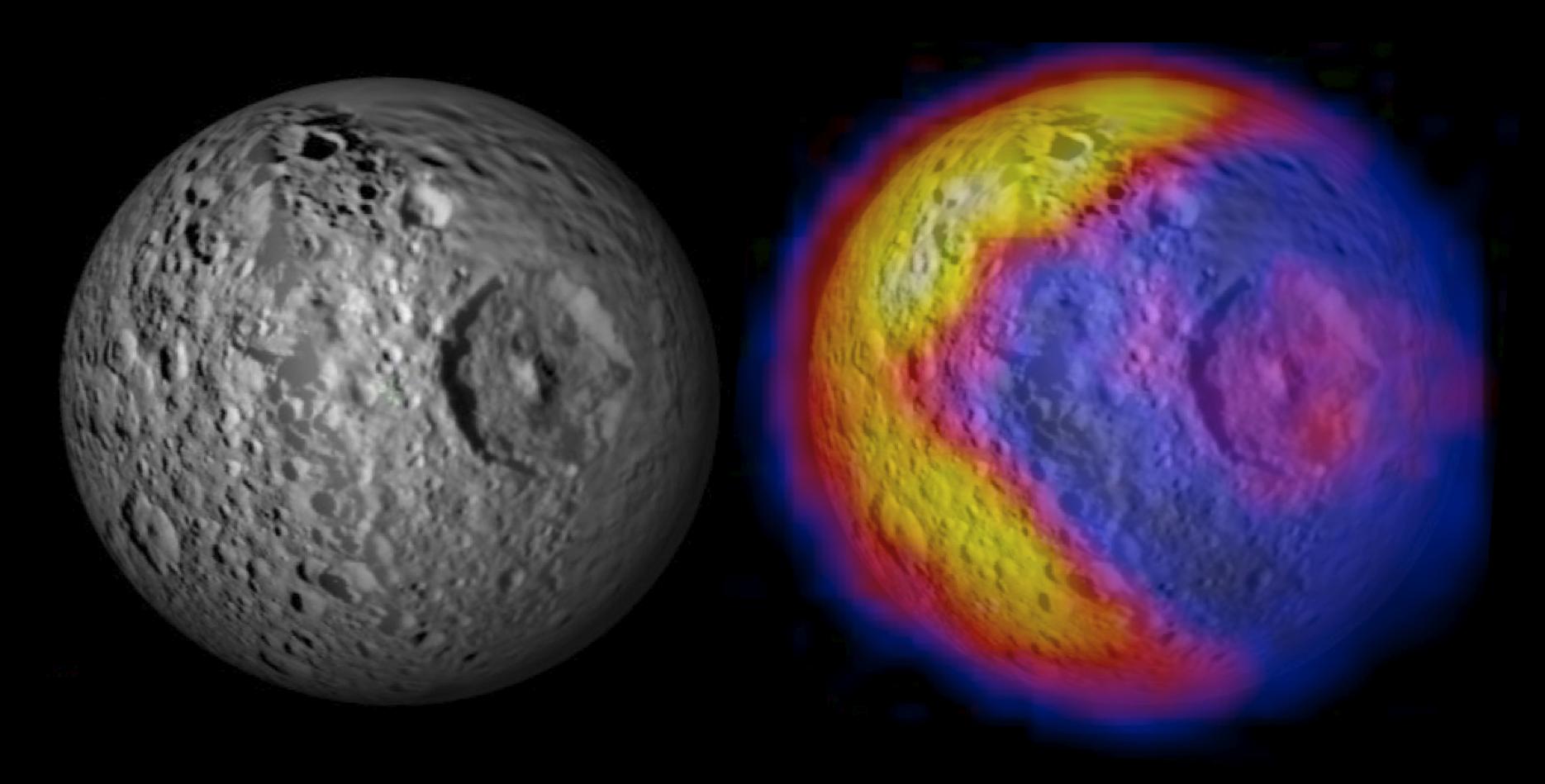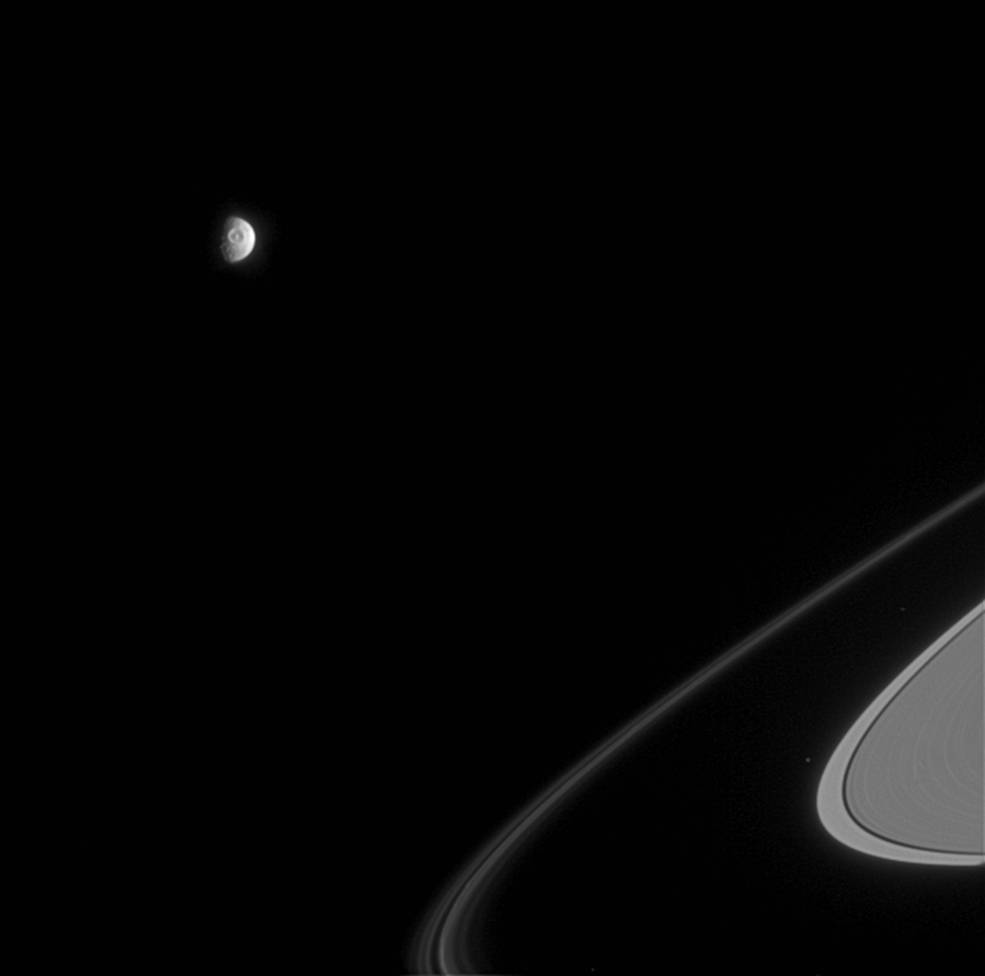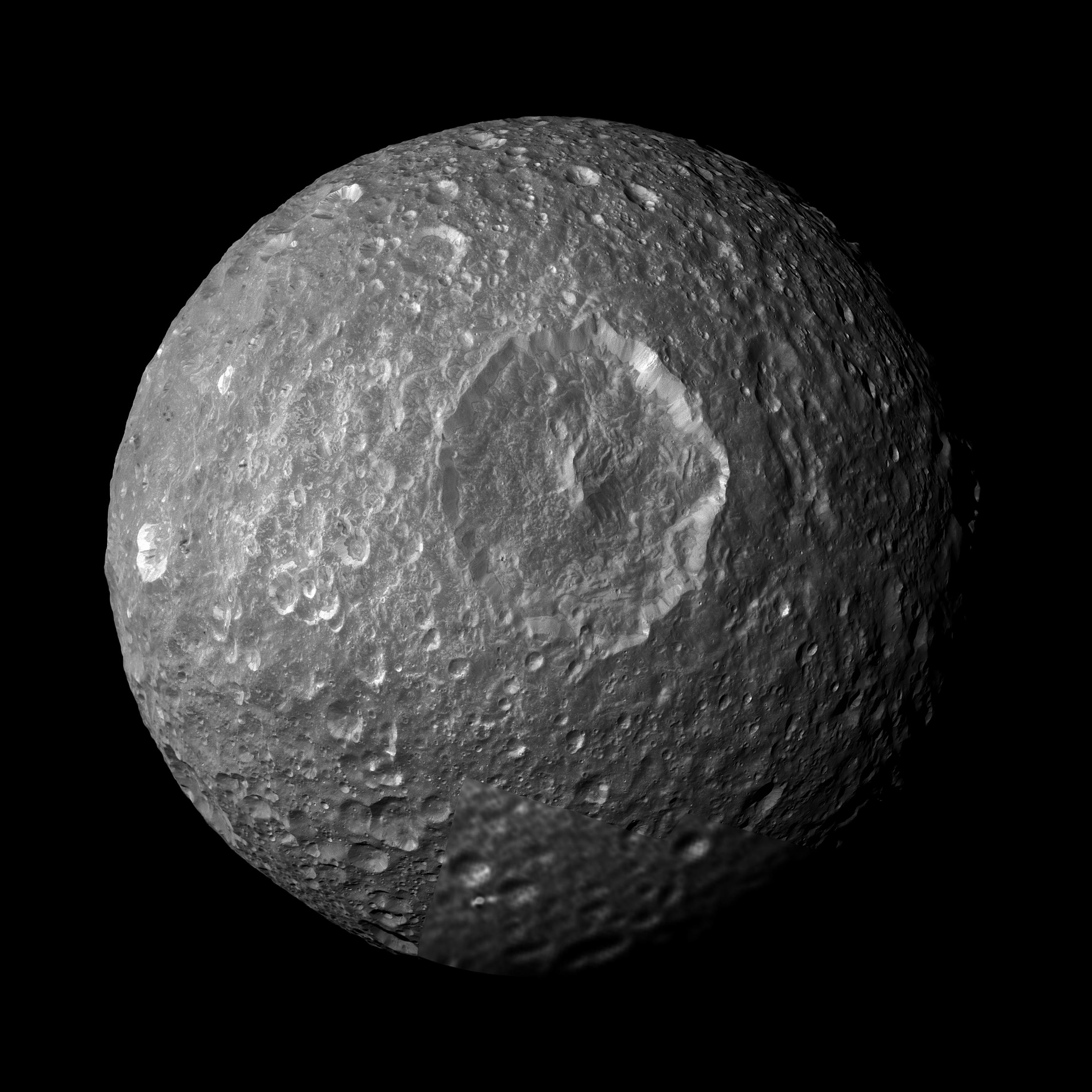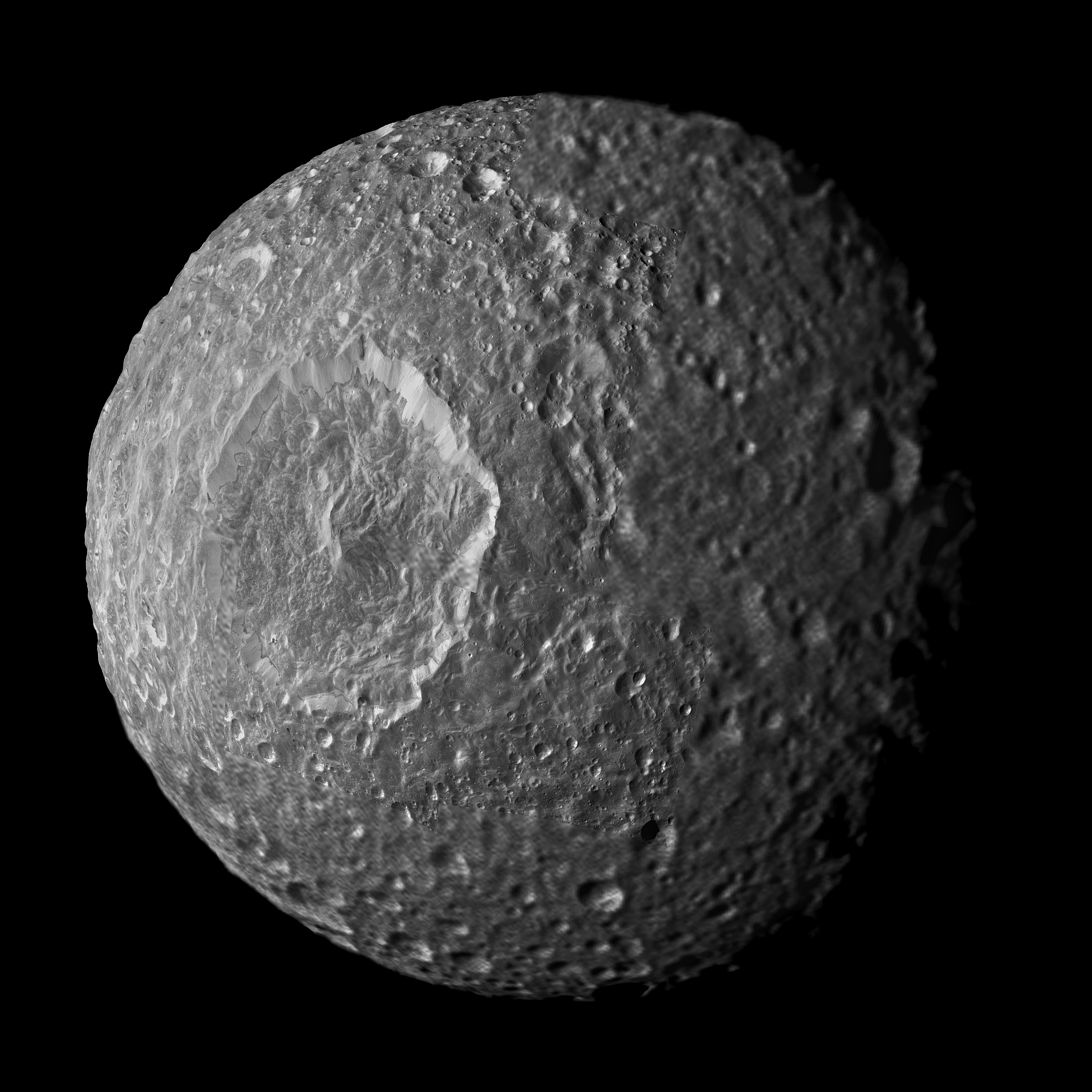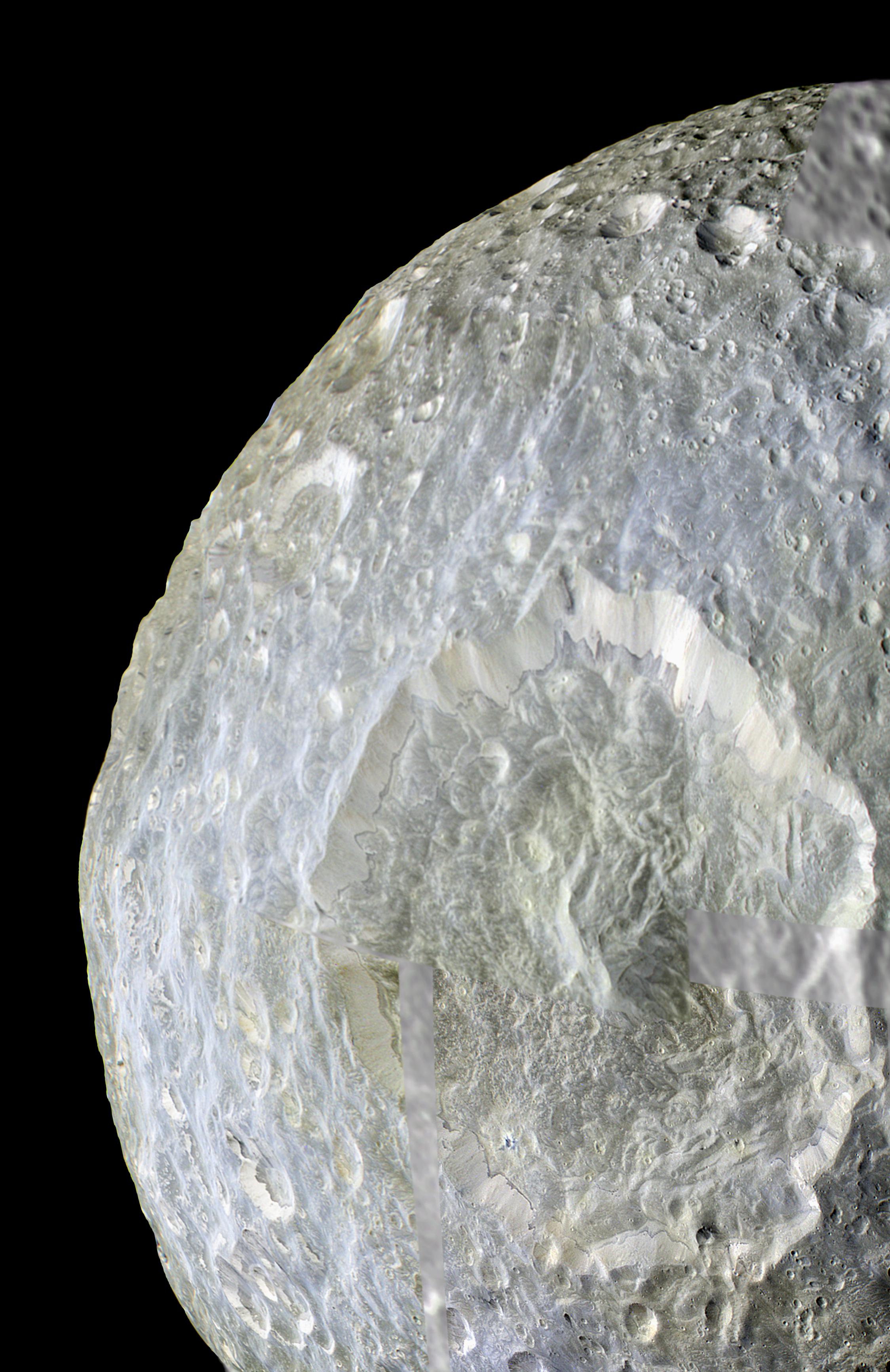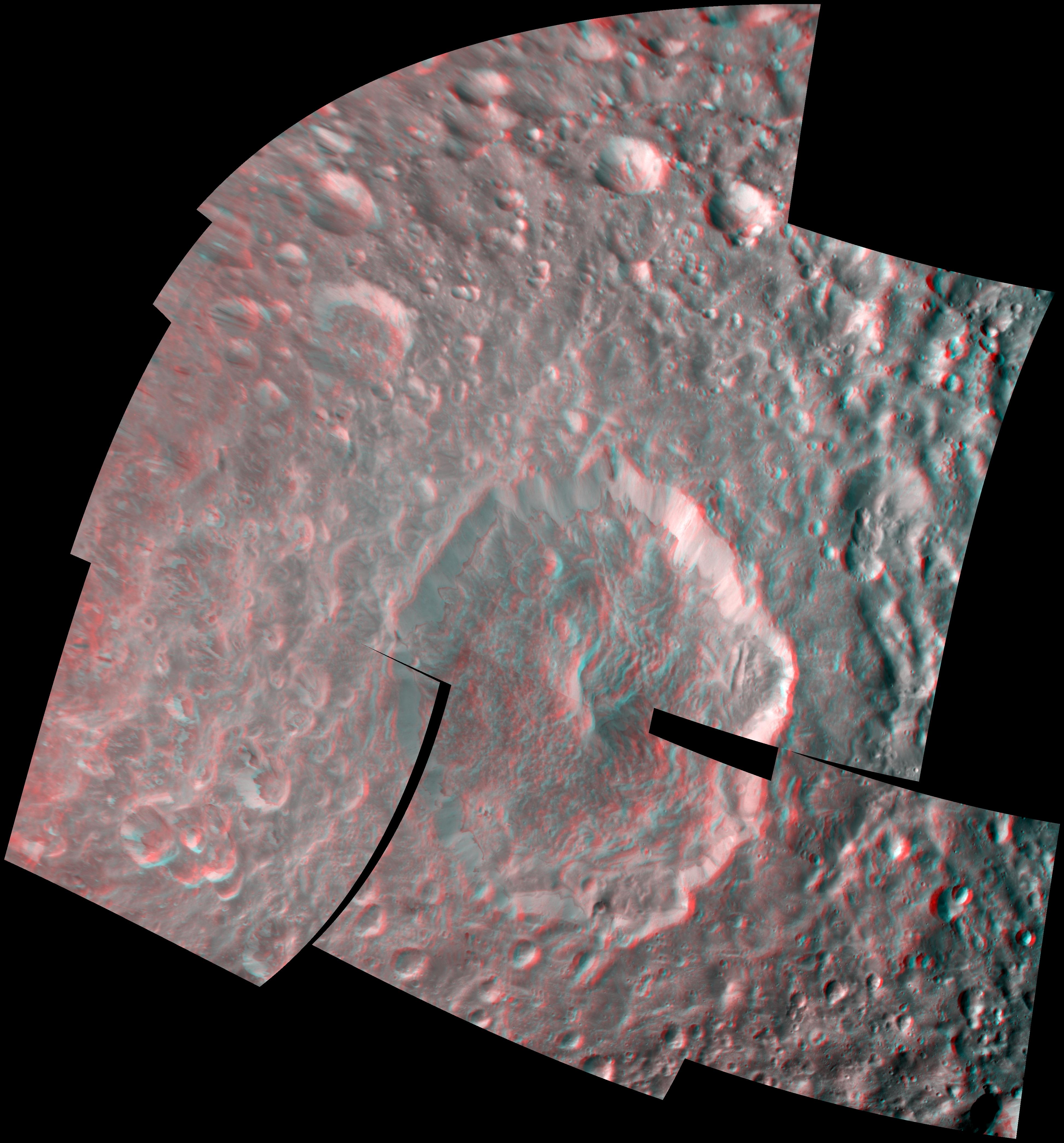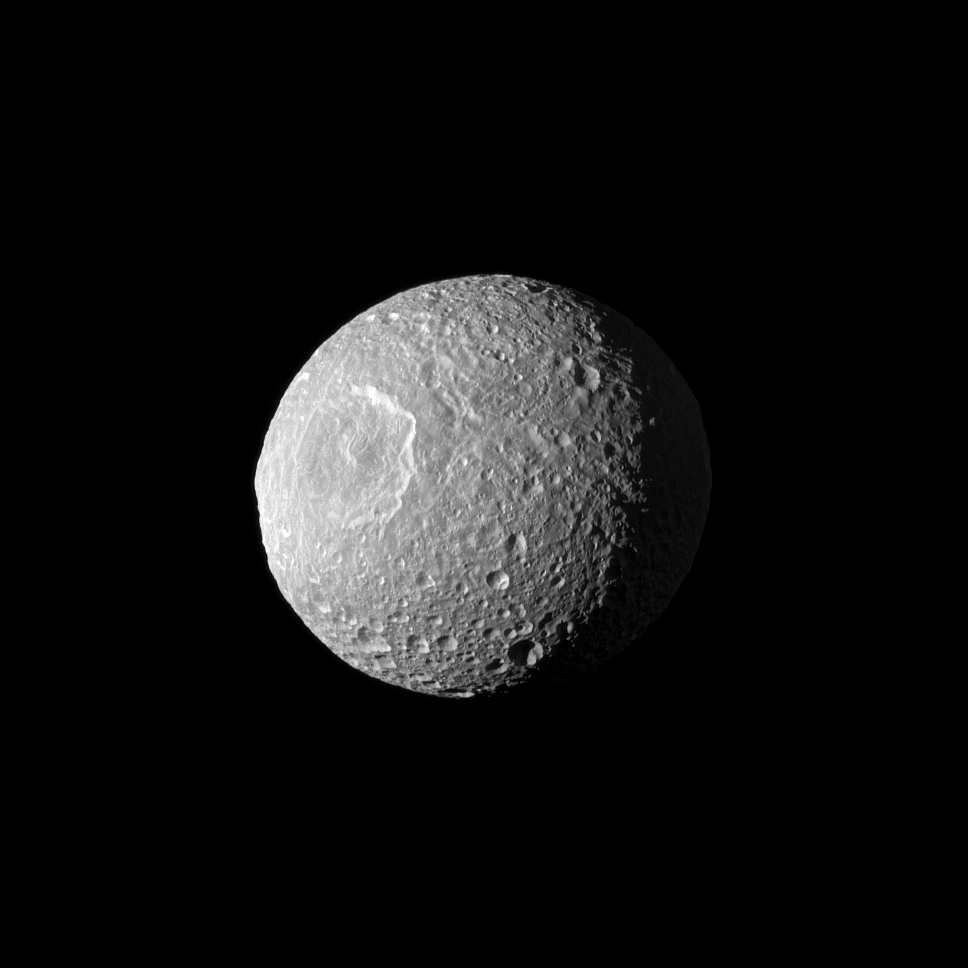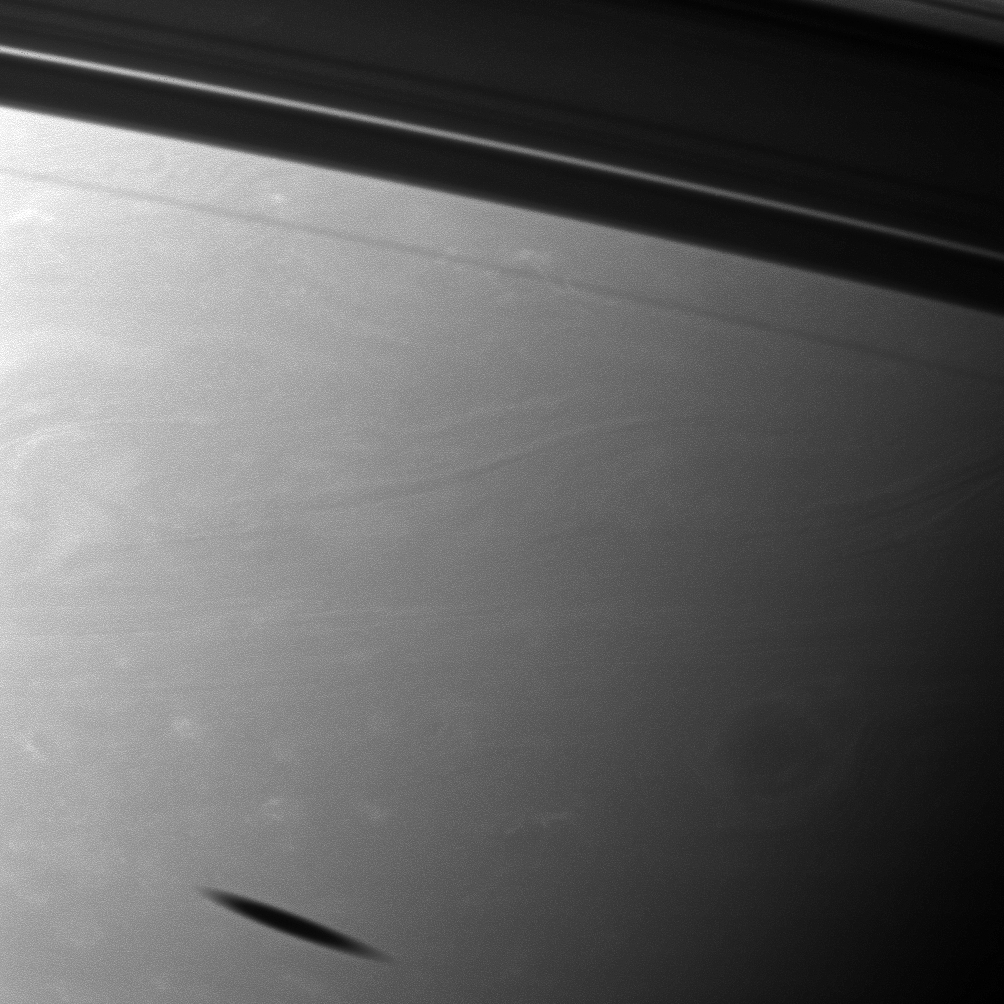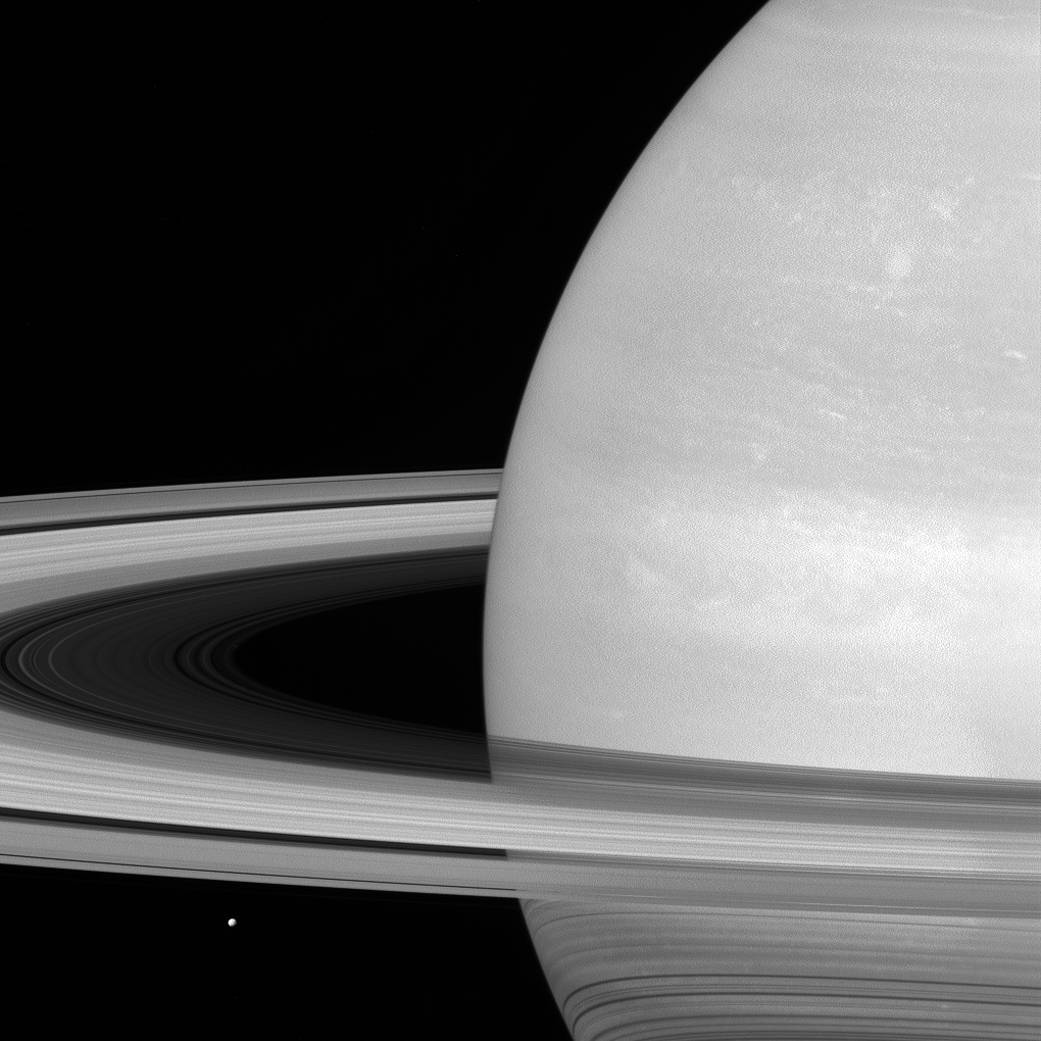Meet Mimas: Saturn's Death Star Moon
Flying By Saturn's 'Death Star' Moon Mimas
Saturn's moon Mimas is dominated by a huge crater called Herschel that makes the moon look like the Death Star from "Star Wars." This photo was taken Feb. 13, 2010, by NASA's Cassini spacecraft. Mimas is only 246 miles (396 kilometers) across.
Mimas Is Also Space Pac-Man
This figure illustrates the unexpected and bizarre Pac-Man like pattern of daytime temperatures found on Saturn's small inner moon Mimas. The heat map was compiled from data recorded by the Cassini spacecraft during a Feb. 13, 2010 flyby of Mimas.
Saturn's Moon Mimas, With Rings
Mimas, with its large Herschel crater, resembles the Death Star as it looms over Saturn's rings in this image from Cassini.
Herschel Crater on Mimas
This mosaic, created from images taken by NASA's Cassini spacecraft during its closest flyby of Saturn's moon Mimas on Feb. 13, 2010, looks straight at the moon's Herschel crater and reveals new insights about the moon's surface. Herschel crater gives Mimas its "Death Star" appearance. It is about 80 miles (130 kilometers) wide.
Streaked Craters of Mimas
This false-color view of Saturn's moon Mimas from NASA's Cassini spacecraft highlights terrain-dependent color differences and shows dark streaks running down the sides of some of the craters on the region of the moon that leads in its orbit around Saturn. The origin of the color differences (exaggerated by computer enhancement) is not yet understood.
Streaks and Markings on Saturn's Moon Mimas
Relatively dark regions below bright crater walls and streaks on some of the walls are seen in this mosaic of Saturn's moon Mimas, created from images taken by NASA's Cassini spacecraft during its closest flyby of the moon on Feb. 13, 2010
Mimas' Color Near Herschel Crater
Subtle color differences on Saturn's moon Mimas are apparent in this false-color view of Herschel Crater captured by NASA's Cassini spacecraft during its closest-ever flyby of that moon on Feb. 13, 2010. The crater is 80 miles (130 kilometers) wide.
Breaking space news, the latest updates on rocket launches, skywatching events and more!
Mimas' Herschel Crater in 3-D
NASA's Cassini spacecraft captured a three-dimensional view of the large Herschel Crater on Saturn's moon Mimas during its closest-ever flyby of the moon on Feb.13, 2011. The crater is 80 miles (130 kilometers) wide.
Saturn's Moon Mimas: Three-Quarter Portrait
Appearing like a cyclops gazing off into space, Saturn's moon Mimas and its large Herschel Crater are profiled in this view from NASA's Cassini spacecraft taken on Feb. 13, 2010.
Mimas' Shadow on Saturn
The shadow of the moon Mimas creates a smudge on the southern hemisphere of Saturn in this view from the Cassini spacecraft. Image taken Jan. 21, 2012.
Mimas and Saturn's Rings
As Cassini nears the end of its mission, it continues to beam data back to Earth, including this image of Saturn, its rings and the tiny moon Mimas. The craft's wide-angle camera captured the image of the sunlit rings on July 21, 2016.

Space.com is the premier source of space exploration, innovation and astronomy news, chronicling (and celebrating) humanity's ongoing expansion across the final frontier. Originally founded in 1999, Space.com is, and always has been, the passion of writers and editors who are space fans and also trained journalists. Our current news team consists of Editor-in-Chief Tariq Malik; Editor Hanneke Weitering, Senior Space Writer Mike Wall; Senior Writer Meghan Bartels; Senior Writer Chelsea Gohd, Senior Writer Tereza Pultarova and Staff Writer Alexander Cox, focusing on e-commerce. Senior Producer Steve Spaleta oversees our space videos, with Diana Whitcroft as our Social Media Editor.
